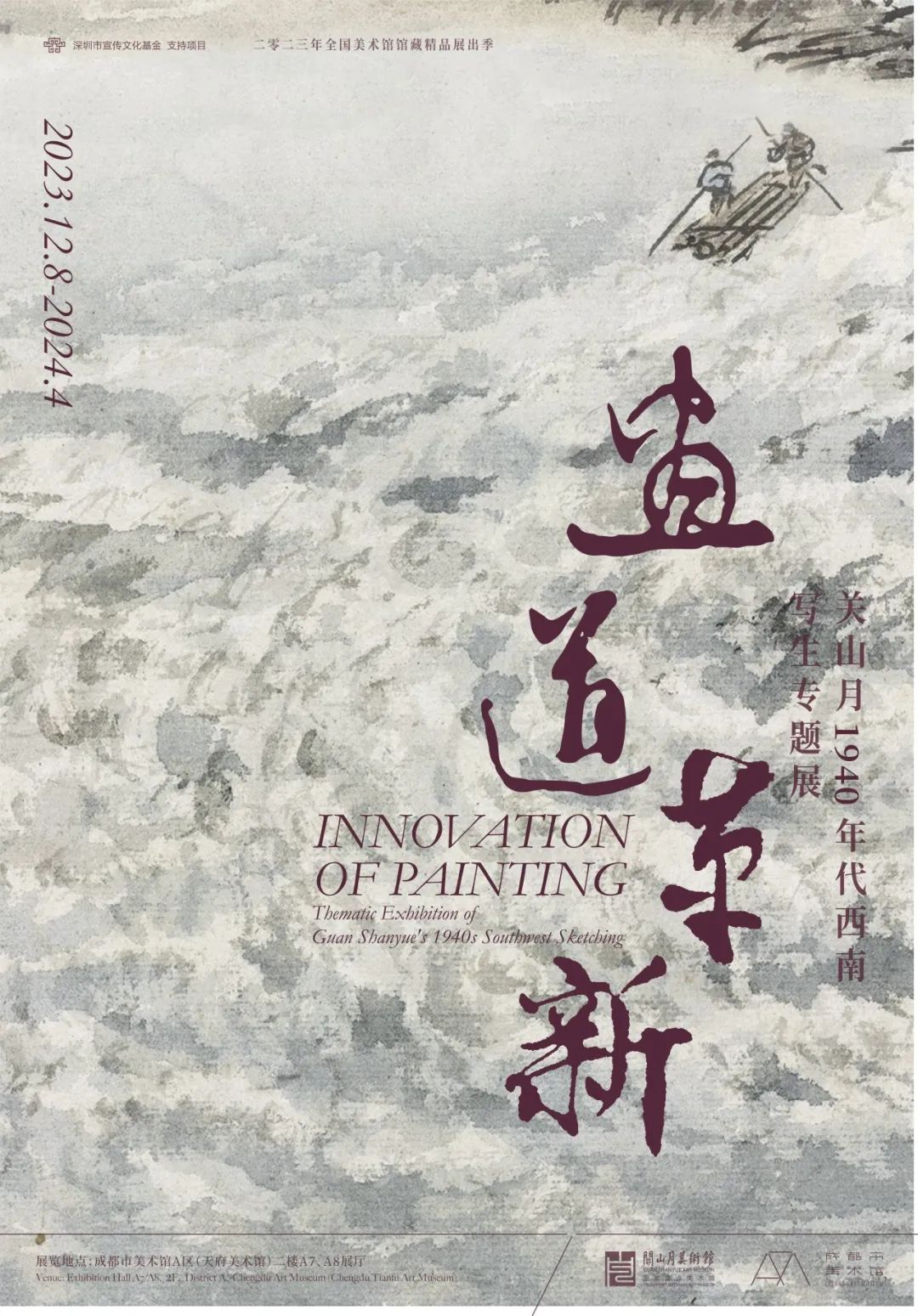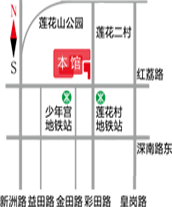
- Official announcement! The Innovation of Painting Path - The Southwest Sketching Exhibition of Guan Shanyue in the 1940s (Chengdu Station) is here!
-

Click to view Exhibition period: December 15, 2023 to April 2024 (withdrawal time subject to Chengdu Art Museum)
Exhibition location: Exhibition Hall A7/A8, Zone A of Chengdu Art Museum (Chengdu Tianfu Art Museum)
Organizers: Shenzhen Guanshanyue Art Museum and Chengdu Art Museum
In 1941, Guan Shanyue met his friend Zhao Wangyun in Chongqing and was introduced to Chengdu. He stayed at the Fabi Rui Alumni Association on Duyuan Street, marking the end of Guan Shanyue's "wandering life" since 1940. Having established a stronghold in Chengdu, Guan Shanyue began to explore the surrounding beautiful mountains and rivers, from Leshan, Yibin, Zigong, to Dunhuang. She devoted herself wholeheartedly to sketching, creating, and preparing for art exhibitions. The unique landscape and folk customs of Sichuan stimulate Guan Shanyue to integrate her vivid sketching experience and artistic pursuit into her writing. The paintings in Wuhou Temple, Dujiangyan Irrigation Project, Gaiwan Tea... can be seen everywhere in the exhibition. The leisure and rich cultural life in Chengdu has become the inspiration for his creation.
Can you imagine Lao She, Xu Beihong, Guo Moruo, Zhang Daqian? These textbook level masters were friends made by Guan Shanyue during her time in Shu!
Due to its geography and history, Chengdu became an important city in the rear area during the Anti Japanese War. This city has welcomed many writers, scientists, educators, and artists who reside, work, live, write, create, and grow here. They use their talents and inspiration to leave a richer cultural background for this city, and Guan Shanyue is one of them. Cultural figures from all walks of life use art to make friends and complement each other, forming a diverse and active cultural atmosphere that greatly expands Guan Shanyue's thinking and vision, and enhances and enriches his artistic appearance. Guan Shanyue and these friends from various fields not only exchanged ideas, collided, and made progress together, but also supported each other and shared hardships during that difficult era.
Chengdu Academy of Painting and Guan Shanyue also have a deep and distant friendship. Guan Lao and the first president of Chengdu Painting Academy, Zhu Peijun, as well as consultants Zhang Caiqin, Wu Yifeng, and others, had a deep relationship during the war. In 1981, Guan Lao revisited his hometown and left behind a treasure for Chengdu Painting Academy, which has now become an important collection of exquisite works in the museum.
After witnessing the perils of her country and family, Guan Shanyue used her pen to create anti Japanese war paintings that portrayed real suffering, such as "Retreat from the City", "After the Rebellion", and "Zhongshan Refugees". Later, guided by her mentor Gao Jianfu's call for "to revive Chinese art, we must restore our creative power", she resolutely embarked on a journey of sketching in Southwest China. While completing the "KPI" through multiple exhibitions, she also traveled to sketch and created, seeking opportunities to depict reality through traditional Chinese painting.
The transformation of the painting path was not smooth sailing. In the first exhibition in Guilin in 1940, skeptics believed that "leisurely" landscapes should not be painted during the Anti Japanese War period. Guan Shanyue explained that "if the characters in the later landscape were the subject matter, it would not hinder the existence of new art. There should not be a front without a rear, or a gun without mountains and rivers just because of the need for resistance." In the second exhibition in Guilin, a 28 meter long scroll of sketching titled "A Hundred Miles of the Li River" was exhibited as a work to respond to doubts. This exhibition will also showcase some parts of this landscape painting masterpiece, which will feast the audience's eyes.
During the period of entering Shu, Guan Shanyue took Chengdu as his base and traveled to the western part of China, sketching ethnic life and the landscape behind him. The stable living conditions allowed him to create with ease. Many of his large-scale works on his journey to the west were all created in his residence in Chengdu. During this journey to the west, he constantly delved into the folk, experienced human emotions, observed reality, and pondered on creation. Based on reality, he explored the possibility of adapting overseas painting to new historical situations and practical needs, completing what Guo Moruo called the "painting path reform" and profoundly influencing the concept of Chinese painting from life since the founding of New China. It is precisely this experience that forged an artist's broad mindedness and keen perception. Guan Shanyue transformed from a local anti Japanese war painter to a nationally influential figure in the era.
The Southwest Sketching Exhibition of Guan Shanyue in the 1940s will feature seven chapters: "Decision under Crisis," "Where is the Road," "Turning to the Southwest," "Initial Exploration of the Shu Road," "Living in the Shu Land," "Life of Miao Residents," and "Tracing back to Dunhuang," telling the audience about the transformation of Guan Shanyue's painting style. On December 15th, at the A7 and A8 exhibition halls in Zone A of Chengdu Art Museum, let's embark on this sketching journey together with Guan Shanyue!
-
2023-12-27



